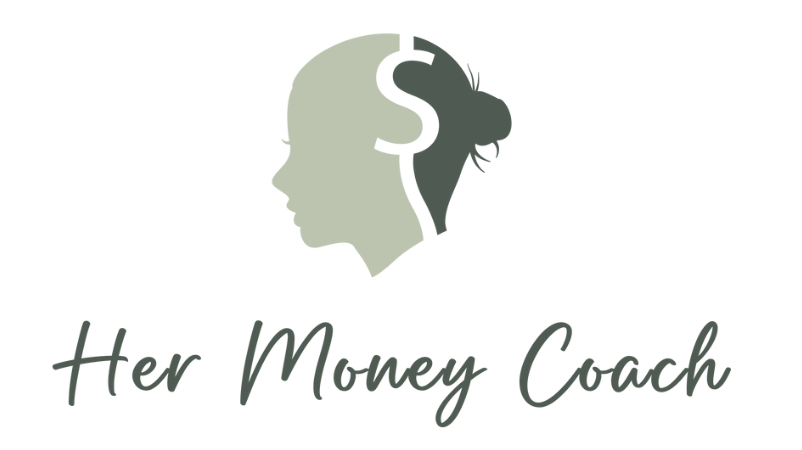
Shine Light On Your Money Dreams with a Vivid Vision
“The future belongs to those who believe in the beauty of their dreams.”—Eleanor Roosevelt.
What is a Vision? Your Money Story Starts Here
Imagine you're an author, and the story you're writing is your financial future. What does it look like? Feel like? Crafting a money vision isn't just about setting goals; it's about envisioning your aspirations and bringing them into the present.
This vision is your unique story, written by you, the main character. Consider Rachel, a teacher, who dreamed of a future where she could balance her passion for education with financial freedom. This is what a financial vision embodies - a personal story of future success that is unique to you.

Creating a money vision involves more than just daydreaming about wealth. It's a strategic and creative process that requires introspection and a deep understanding of your desires and aspirations. It's about painting a picture of your dream life that aligns with your deepest values.
Why Create a Money Vision? It's All About the Feeling
Why chase financial goals? It's not just for the tangible rewards like new cars or a dream house. It's about the feelings those achievements bring: joy, security, abundance.
Take Sarah, for instance, who dreamed of financial independence not just to own luxury cars and homes, but to experience the freedom to travel and the joy of worry-free living. Similarly, consider Laura, a successful attorney who sought financial stability to provide a better life for her family and to enjoy the pleasures of life without stress.
Creating a money vision taps into these feelings now, not in some distant future. It’s not a "you'll be happy when" scenario; it’s about experiencing that happiness and fulfillment in the present.
When we create a money vision, we're connecting with the deeper reasons behind our financial ambitions – be it freedom, security, or joy. This connection makes the journey more meaningful and fulfilling.
A dream is different from a goal, it’s bigger, and it’s not time bound. But, you need a vision, so that you can create goals that matter to you.
The VIVID Framework (Visualization, Inner Values, Vivid Descriptions, Imagery Board, Dream Narrative)
Let's dive into how you can craft this story using our VIVID framework, a method that combines both written and visual elements to construct a vision deeply connected to your personal aspirations, beyond just material achievements.
Visualization: See Your Financial Future
Unleash the power of your imagination. Picture your life after achieving your financial goals. Take Jane, who envisioned herself running a successful eco-friendly business, making a real impact on the environment. This vision guided her career path and investment choices. Just like Jane, envision your own success story.
Perhaps you see yourself retiring early, traveling the world, or making significant contributions to causes you care about. Your visualization is a potent tool that opens your mind to possibilities, setting the stage for financial success.
Let’s explore some effective visualization techniques and exercises. Let’s imagine that of your dreams is to be completely, 100% debt free.
See it - In a calm space, close your eyes and vividly imagine achieving your money goals. Use all your senses, see every detail of the environment. What do you see, hear, smell. What are your feelings, and who's with you?
You might be seeing yourself sitting on your back porch with your favorite friend. As you’re proudly telling her that you finally paid off your last credit cards and our officially debt free. You see her smiling face looking back and you. You see the beautiful flowers and trees in your back yard. You hear the light wind in the background and her soft voice as she congrats you. You hear her telling you that she knew you could do it. You smell the fall in the air and you feel full of pride and accomplishment, your confidence is oozing.
Write it - Daily, write about your future money successes. Describe a typical day in this successful future, focusing on your feelings and activities. This practice brings clarity and cements your vision. So same as above with seeing it, but taking part of that scene, or any similar scene and writing about it.
Practice it - a concept used in athletic training is called mental rehearsal, which is when you practice achieving your desired outcome. Visualize the steps, challenges, and your strategies for overcoming them. Feel the success as if it’s already yours."
Inner Values: Align Your Dreams
Your core values are crucial in shaping your financial vision. I have a friend Lisa who prioritized health and wellness in her life. Her financial vision entailed building a wellness retreat, aligning her career with her passion for healthy living. Your financial dreams should reflect what's truly important, ensuring a future that's both prosperous and meaningful. Similarly, think of Anna, whose core value was family. Her vision involved creating a family business that could be passed down to future generations, symbolizing stability and legacy.
In this step, it's important to delve deep into what makes you tick. What makes you feel energized? What are your non-negotiable values? What aspects of life do you hold dear? Aligning these core values with your financial goals creates a powerful synergy that drives you towards your vision.
If you're stuck and you don’t know where to begin? Start at the end, the literal end of your life. Imagine that you are in the final chapter of your life looking back on your journey. Trust me, it's unlikely you'll regret not spending more time at work. Instead, you'll cherish those special moments spent with loved ones, and taking on those big adventures you always dreamed of. Maybe it's launching that business you've thought about or exploring new corners of the world. Studies show that this reverse thinking is powerful in connecting you with what truly matters. Your dreams are important – let them guide you!
Here are a few exercises that might help you in this process.
Values Mapping Exercise: Create a values map by listing your core values and connecting them to your financial goals. For example, if 'community involvement' is a core value, link it to a goal of investing in local businesses or starting a community project. This visual representation helps you see how your finances can directly support what matters most to you.
Values-Based Decision Framework: Develop a decision-making framework based on your values. Before making any significant financial decision, ask how it aligns with your core values. If a potential investment or expenditure doesn't support these values, reconsider it. This approach ensures that each financial choice you make reinforces your principles and long-term vision.
Personal Values Statement: Write a personal values statement that encapsulates what's most important to you. This statement should be a clear, concise declaration, like a mission statement, reflecting your core values and how they relate to your financial aspirations. Regularly review and reflect on this statement to guide your financial planning and keep your goals aligned with your values. For instance, if 'sustainability' is a core value, your statement might include a commitment to eco-friendly investments and spending practices.
Vivid Descriptions: From Abstract to Concrete
Now, transform your abstract goals into concrete plans. Take inspiration from people like Emily, who mapped out her journey from a freelance photographer to owning her gallery. Use resources like books, podcasts, and seminars to fuel your imagination and turn your vision into a clear, tangible roadmap. Detailing your vision is like creating a blueprint for your financial future. It's about laying out the steps, understanding the challenges, and preparing for the opportunities.
Explore these methods:
Develop a Visual Roadmap: Sketch out your financial journey, beginning with your ultimate goal and marking key milestones backwards. This could be a timeline or flowchart, outlining each step towards your goal, helping you to visualize and track your progress effectively.
Timeline Creation: Build a detailed timeline for your financial goals, starting from the end goal and working backwards to the present.
Flowchart of Opportunities and Challenges: Construct a flowchart that maps out the potential opportunities and challenges you might encounter on your financial journey. This visual tool helps you anticipate and strategize for different scenarios, allowing for more effective planning and decision-making.
Imagery Board: A Visual Manifestation
A vision board is a powerful tool. It’s a visual representation of your financial aspirations. Populate it with images, quotes, symbols, and numbers that resonate with your vision. Sarah, an aspiring author, created a vision board filled with book covers, writing awards, and travel destinations – all symbols of her literary aspirations. This board isn’t just a collage; it’s a tangible reminder of where you’re headed.
A vision board can come in many different forms such as:
Digital Vision Board: Utilize digital tools and apps to create an electronic vision board. This can be a dynamic and interactive way to visualize your goals. Include digital images, inspirational quotes, and even links to articles or resources that align with your financial aspirations. This board can be updated regularly and accessed from anywhere, keeping your goals at your fingertips.
Thematic Vision Collages: Create multiple, smaller vision boards for different aspects of your financial goals. For instance, one board could focus on your career ambitions, another on personal investments, and a third on lifestyle desires. This approach allows for more detailed and focused visualization in each area of your financial life.
Goal-Oriented Scrapbook: Craft a scrapbook that combines imagery with written goals. Each page can represent a different financial aspiration, with pictures, motivational quotes, and a brief description of your goal and the steps you plan to take to achieve it. This technique combines visual inspiration with concrete planning, making your aspirations both vivid and actionable.
Dream Narrative: Write Your Future Story
Get creative and write a story about your future self, living out this financial vision. Imagine different 'what if' scenarios, and play out these stories in your mind. When you emotionally connect with your future success, you begin to internalize the joy and satisfaction of achieving your goals.
Here are several creative techniques to write your own story.
Future Letter Writing: Write a letter to yourself from the future, detailing all you've accomplished. Describe the emotions, the lifestyle, and the successes you've experienced. This exercise helps you emotionally connect with your future achievements and can be a powerful motivator.
Role-Playing Interviews: Imagine being interviewed in the future about your financial success. Role-play this interview, either by writing it out or recording it. Answer questions about how you achieved your goals, the challenges you faced, and the wisdom you gained. This method allows you to articulate your vision and reinforces your belief in your ability to succeed.
Success Journaling: Keep a daily journal where you visualize and write about a small success related to your financial goals. This could be anything from a positive habit you've established to a small win in your financial planning. Over time, these entries create a narrative of progress and success, encouraging a deeper emotional connection with your long-term financial journey.
Overcoming the Brain's Doubts
Be aware: Your brain might try to dissuade you, claiming it’s impossible. Resist these doubts. Your task now is to imagine, to feel, to experience your vision as if it's already a reality.
Creating a money vision is empowering. It’s about setting the stage for your financial future, aligning your goals with your deepest values, and allowing yourself to feel the joy and satisfaction of success now. You are both the author and the protagonist of this story. Write it boldly, and live it vividly.
Enjoy The Journey
This journey of exploration should be an exhilarating and enjoyable experience. Each step in this framework is not just a task; it's an opportunity to explore your deepest aspirations and play with possibilities. Remember, this is your vision, your dream, your story - have fun with it, experiment, and watch as your financial future takes on a vivid and exciting shape.
The Wisdom of Slow Growth
In crafting your financial story, draw inspiration from nature's lessons of slow growth. An oak tree, starting as a humble acorn, but grows into a formidable force over time. Your journey to financial abundance is similar. Initially, your progress might feel slow, almost imperceptible. But just like the oak tree, with the nurturing power of time and the magic of compounding interest, your financial efforts will flourish, culminating in a robust and rewarding financial future. This journey is a testament to patience, care, and the enduring wisdom of slow, steady growth.
Legal Disclaimer: This content is not financial advice and is for informational purposes only. Always consult with a qualified financial professional before making any financial decisions.
